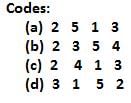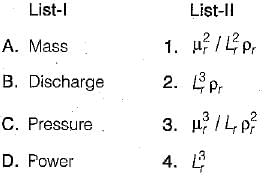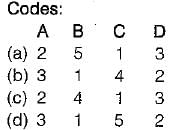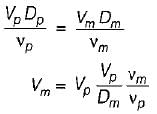Test: Dimensional & Model Analysis - 2 - Civil Engineering (CE) MCQ
10 Questions MCQ Test GATE Civil Engineering (CE) 2025 Mock Test Series - Test: Dimensional & Model Analysis - 2
A 1.0 m long model of a ship is tnwed in a towing tank at a speed of 81 cm/s. To what speed of the ship of 64 m long does this correspond?
A model boat, 1/100 size of its prototype has 0.12 N of resistance when simulating a speed of 5 m/s of the prototype. Water is the fluid in both cases. What is the corresponding resistance in the prototype?
[The frictional forces can be neglected]
[The frictional forces can be neglected]
| 1 Crore+ students have signed up on EduRev. Have you? Download the App |
Oil of density 917 kg/m3 and dynamic viscosity 0.29 Pa.s flows in a pipe of diameter 15 cm at a velocity of 2 m/s. What would be the velocity of flow of water in a 1 cm diameter pipe to make the two flows dynamically similar? The density and viscosity of water can be taken as 998 kg/m3 and 1.31 x 10-3 Pa.s respectivley.
A 1 :5 scale model of a passenger car is tested in wind tunnel. The prototype velocity is 50 km/h. if the model drag is 200 N, what is the power required to overcome the drag in the prototype? The air in the model and prototype can be assumed to have the same properties.
A pipe of diameter 1.5 m is required to transport an oil of relative density 0,9 and kinematic viscosity = 3 x 10-2 stoke at a rate of 3 m3/s. if a 15 cm diameter pipe with water at 20°C (n = 0.01 stoke) is used to model the above flow, the discharge in the model is
Both Reynolds number and Froude number assume, significance in one of the following example:
Match List-I (Parameter) with List-II (Scale ratio Froude Laws) the following:


Match the List-I (Parameter) with List-ll (Scale ratios for Reynolds laws):


Which one of the dimensionless numbers identifies the compressibility effect of a fluid
Geometric similarity between model and prototype means the similarity of
|
31 docs|280 tests
|
|
31 docs|280 tests
|


































